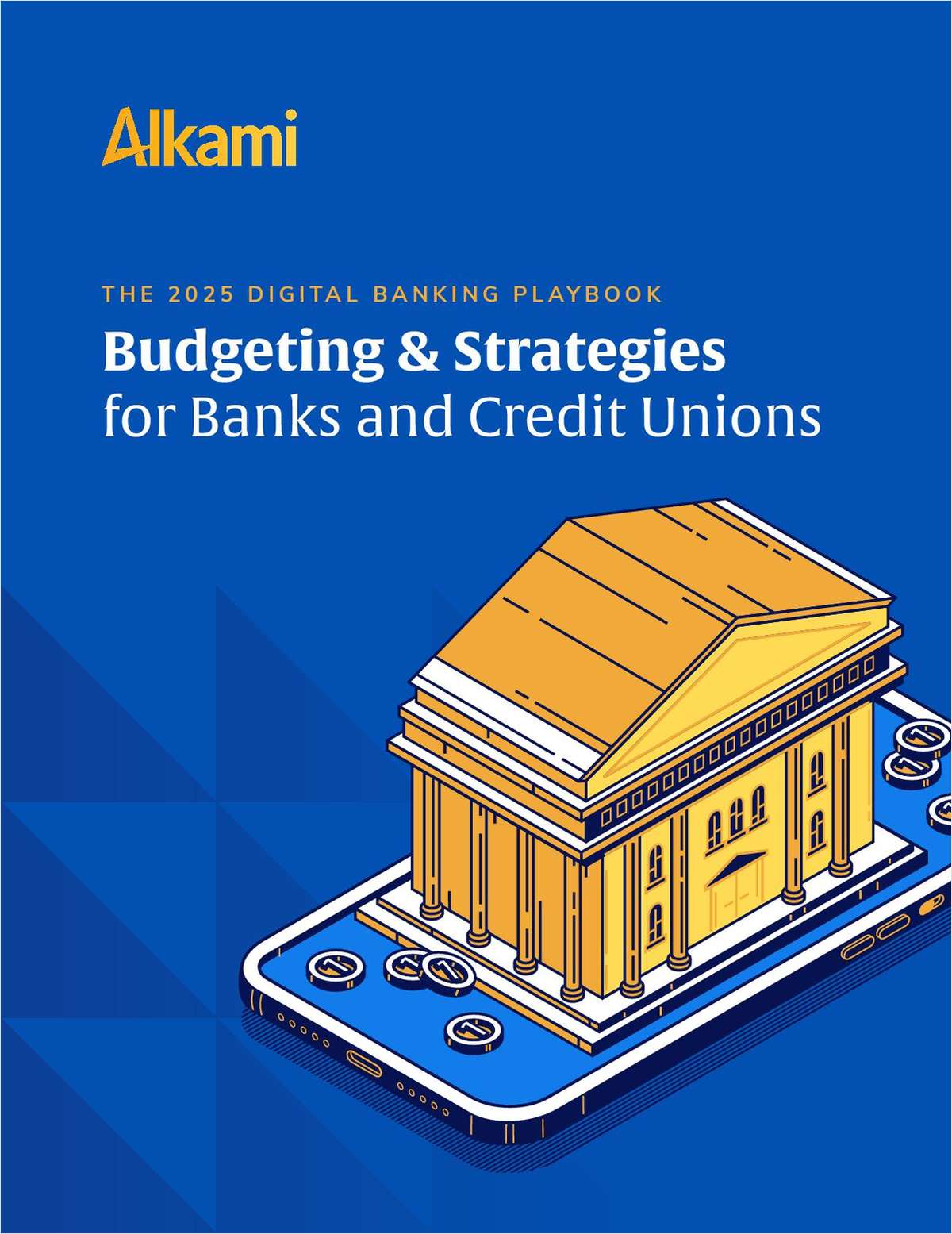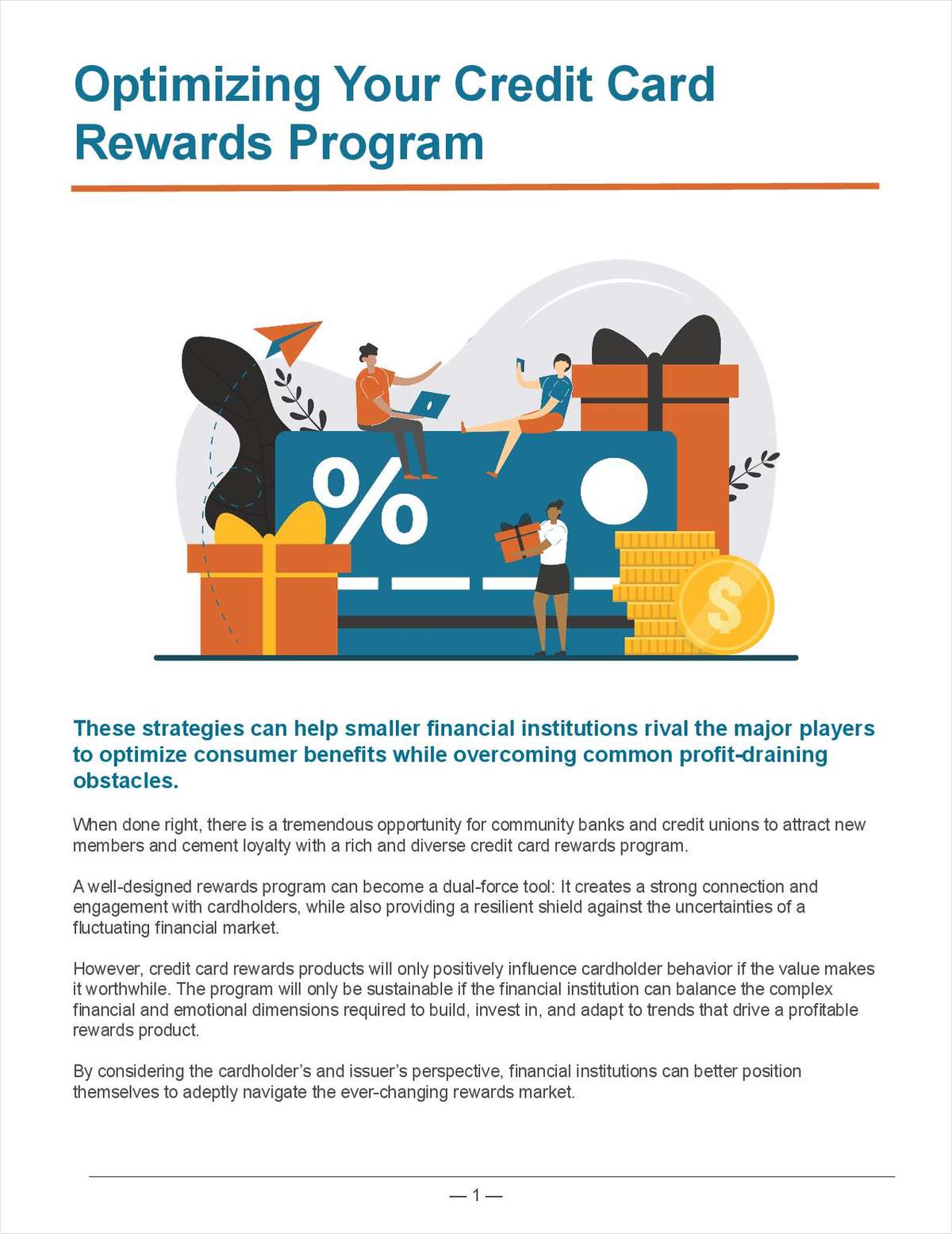 Use technology to find new ways to make processes less cumbersome.
Use technology to find new ways to make processes less cumbersome.
The financial industry is experiencing a great wave of modernization, which is changing the way we operate and conduct our daily business. Regulations on compliance and internal risk assessment are heavier than ever before to protect our membership from ever-increasing threats. Efficiency, accuracy and biometrics of staff and operations are closely followed to ensure we keep up with a constantly changing and heavily regulated industry. Because of all this, we are highly dependent on technology to keep us "in the know" for every area of our business.
As a network technician for Listerhill Credit Union based in Muscle Shoals, Ala., I have a front-row seat in this evolving landscape where our team of 11 people is responsible for 17 branches in two states. We are charged with safeguarding anything and everything related to over $780 million in assets and the daily financial lives of over 90,000 members. We all have our responsibilities, but we also need to make sure we provide excellent member service to not only our membership but our staff.
Just like any other credit union in the country, every member of our IT team wears many hats. It's very easy to get lost in the world of being reactive instead of proactive, especially when you're inundated with daily tasks and requirements of multiple departments needing you "right now." Here are four key areas I've identified where technology can make a big impact.
Putting People First
Credit unions focus on community above all. The hometown feel and personal member service experience we provide is second to none, something that has nearly disappeared from big banks. The more our IT department can streamline approval processes, application procedures and transaction workflows that our staff must accomplish with technology, the more time they can spend with our membership to help them better understand their financial needs and future opportunities to achieve their lifetime goals.
This desire to serve others is not only about our members. For me, it's about seeing our staff get overwhelmed by phone calls from other departments that impeded them from accomplishing the tasks those departments were calling about. In short, I saw a need. I met with various departments and their teams to offer to develop a new and improved method for them to get their jobs done. These efforts translated into not only happier employees and a better, more productive work environment, they were also suddenly generating metrics for their work, which was the cherry on top and made management happy.
Eliminating Manual Processes When You Find the Right Fit
I remember a time when we had a monstrous cardex device in our lobby behind the teller line that rolled through tons of bays of signature cards that tellers and member service reps had to wade through. Our ACH clerk would have IT print out books of green-bar paper full of every single ACH transaction from each day, and once that clerk was done with it, those records would live in our basement until the compliant year, when we could have them destroyed. Quite frankly, I cringe when I think of those days. We've come a long way, to say the least. We are now paperless on 90% of our documentation that is scanned into various databases, which are backed up over multiple locations, and we've automated the ACH process as well. Even so, we can always make things better, and it's our responsibility to stay on the lookout for opportunities to do just that.
In my case, our first help desk solution wasn't very user friendly for anyone. It took me a full day to program the simplest ticket template – time I should have been using to answer requests and help our staff. Creating templates in that product was like writing 1990s spaghetti code, and it was a complete nightmare of a user interface. As you know, IT purchases are a big deal, research and implementation is complex and time-consuming, and it's awful to have to reinvent the wheel, but after a few years of suffering with that help desk, a new employee came in who told us about ManageEngine's ServiceDesk Plus. One simple demo sold us on this new platform that was a fraction of the cost and so much more user friendly for not only the staff but for me! I am now able to write incident templates in mere minutes, freeing me up for what I should be doing, and I also adapted it to serve other departments. More than 30 individuals act as technicians in their own areas of the credit union now, and I'm adding more all the time.
Assess Where You Are
Ask yourself, are you using your help desk software to its fullest extent? Are you organizing different departments and streamlining their processes to help them be as efficient as possible? Are you generating metrics to show if some employees are slower than others, possibly needing additional training? Are you seeing that, maybe, you need additional employees to help overtaxed ones? Are you seeing trends of problems in a certain area that need to be addressed?
My "pet project" at Listerhill was met with a bit of skepticism at first, but then I showed them reports that opened their eyes. After a month of using the platform, they suddenly had a plethora of statistics in different areas they'd never had before, in a format that was nice enough to take straight to the board of directors for their various needs – even for proof that they needed new employees. I scheduled reports to send to them weekly, monthly and quarterly and even built a real-time dashboard they could access at a moment's notice.
Enabling Innovation to Create Your Own Opportunities
Technology is a maelstrom of change that tumbles us along with it. We must keep our heads above water and stay informed to find new and innovative ways to use it, even if it's from the vendors we already have a relationship with. Staying on top of the advances in the industry isn't optional, it's a constant imperative.
We can't lock ourselves in our respective cubes or offices and expect to stay afloat. We must communicate with the employee base in our outlying departments and identify ways to keep moving forward. If you want to write up a technical document on how to change a tire, you don't ask the writer, you ask the guy that changes the tires. Analytics are great, but communication is key. Be open and receptive to things like, "Wouldn't it be great if …" "I wish that our ticket system would …" or "Is there any way to …?" Situations like that are the first step to turning your IT help desk into an enterprise service desk solution that encompasses your entire organization.
I, personally, learn by doing. I make a point to attend the ManageEngine User Conferences, where I'm known to ask a lot of questions of the actual developers of the product and technicians with boots on the ground experience. These conferences get me fired up about the new things coming down the pipe, and I immediately begin dreaming up ways to apply them to help our credit union. After my first user conference, I came back armed with ideas and quickly approached management about getting them done. They wanted me to start with one department, and once my changes were implemented to such great success, "shiny object syndrome" kicked in and I was cleared to work with other departments. By the time the next user conference came around, I'd already discussed my plan of action with our process improvement department and steering committee, where together we approached each department for their wish list for streamlining certain procedures. I engaged with help desk enthusiasts to build new solutions for our needs. Since then, we've developed an enterprise service desk that could rival what is found in other financial institutions with greater resources at their disposal.
I'm sharing this story with you to encourage you to think outside the box. I'm not a manager in my organization, but by seeking to make a change through technology, I've made an impact. My managers – and the managers of other departments – have grown accustomed to me coming to them with new ideas and plans to make them happen. In fact, our vice president of payments, Angie Retherford, recently had this to say: "The ticket system has allowed us to track problems in a systematic way rather than guessing about the number of calls and what they were for. Leia has helped us segment that tracking so we can know if an individual is having a problem, if a branch has a problem, if we need to provide more training or if we have a larger issue. Before this data, it was just a guess. It has made a real difference in the way we view these issues. When tickets show the number of errors on an individual task, it is hard to complain about having 'so many errors that I can't get my job done.' We now know and have documented proof. It also makes our frontline staff think about what they can do to correct an issue before they put in a ticket, because their name goes on it and they know it is being tracked."
Eleanor Roosevelt once said, "It is better to light a candle than curse the darkness." So, for all you little guys out there, know that even a simple "tech" can effect change by sparking that fire. It can also change your career.
 Leia Powell
Leia Powell Leia Powell is a Network Technician for Listerhill CU. She can be reached at [email protected].
© 2025 ALM Global, LLC, All Rights Reserved. Request academic re-use from www.copyright.com. All other uses, submit a request to [email protected]. For more information visit Asset & Logo Licensing.







